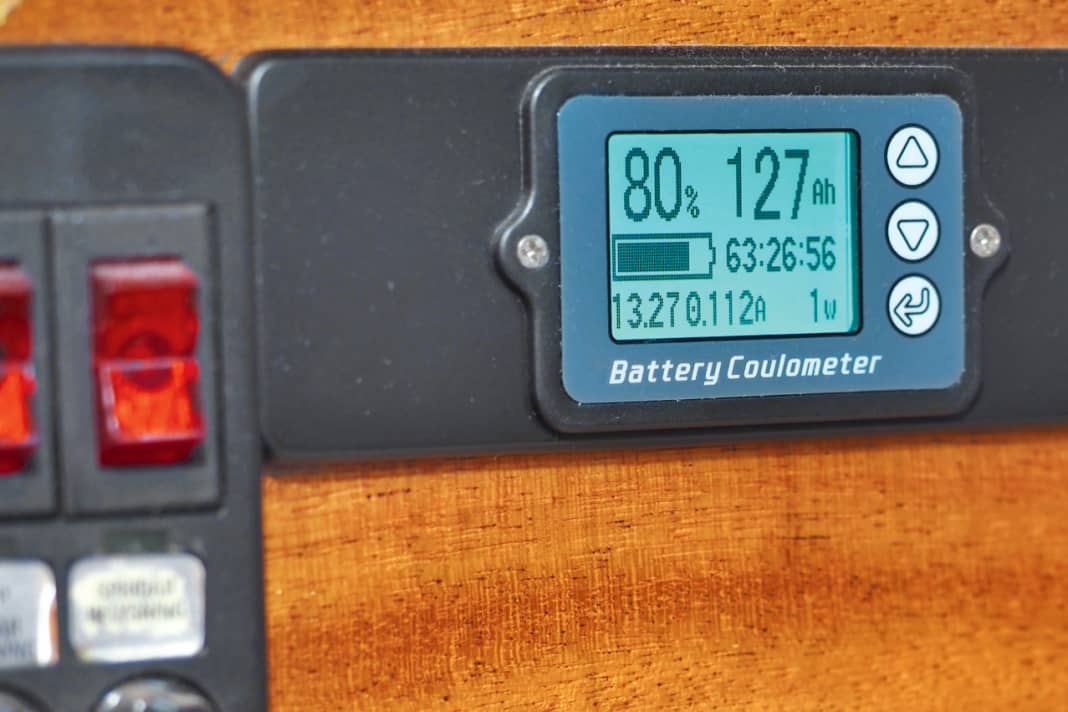




DOD and SOC, these abbreviations are almost unavoidable when it comes to the service life of rechargeable batteries. DOD stands for depth of dischargedepth of discharge. SOC stands for State of chargei.e. the current state of charge.
The final charge depth indicates what percentage of the nominal capacity is utilised. For lead-acid batteries, this is usually 50 to 70 per cent. If more energy is removed, the battery will be permanently damaged and, in the worst case, will stop working. Lithium cells are tougher and can withstand a complete discharge, i.e. a DOD of 100 per cent, which is common in mobile phones or battery tools, for example. However, continuous use of the full capacity is not without consequences. As can be seen in the diagram on the left, the life expectancy drops significantly. At around 500 cycles, however, lithium batteries that have been subjected to this kind of abuse still outlast good gel batteries.
Limiting the DOD for a longer service life
If the DOD is limited to 90 per cent, several thousand cycles can easily be achieved. Suppliers such as Mastervolt, who have both technologies in their programme, speak of three times the service life of lead. Other manufacturers claim seven times the number of cycles. On the yacht converted by our sister magazine six years ago, the lithium batteries with integrated BMS show no signs of ageing. And this despite the fact that the boat was used intensively and was underway for around 18 months.
More articles on this topic:
Correct handling of the SOC for optimum performance
The State of charge indicates the percentage of the battery that is currently full. A value that can either be read off the external battery manager or supplied directly by the BMS. The electronics of the storage system usually measure the incoming and outgoing current and use this to calculate the state of charge. The problem with this is that the internal current measurement is usually relatively coarse. In some cases, currents of less than half an ampere are not registered. The state of charge is therefore overestimated over longer periods of time. Especially if the battery is permanently operated in the comfortable range between 20 and 90 per cent SOC.
External battery managers with a measuring shunt work more accurately, but are also unable to record the BMS's own consumption. For normal operation, this does not play a major role and, unlike lead batteries, it does not harm the lithium battery to remain at a low charge level for a longer period of time; on the contrary, it even ages more slowly than when fully charged. However, after longer downtimes and before winter storage, the battery should be filled up to the end-of-charge voltage; this synchronises the display with the SOC and prevents unexpected emergency shutdowns.
Precautionary measures in winter storage
The battery is then discharged to 70 to 50 per cent for hibernation. The remaining capacity should not be significantly lower, otherwise the remaining energy could fall below the critical limit. The BMS then switches off completely. Depending on the battery model and charger, the battery may no longer be recognised as such and the charger may refuse to work. In this case, a different charger or a battery connected in parallel for a short time will help to bring the BMS back to life.
Caution is advised when recharging in winter storage. Lithium batteries generally tolerate temperatures down to minus 20 degrees without being damaged, but react allergically to charging attempts below freezing point. Branded batteries are therefore equipped with either protective circuits or heating systems or both. Inexpensive storage batteries often only have overtemperature protection, so the charger should only be activated deliberately during winter storage and in summer. Constant hanging on shore power, as is usual with lead batteries, is not ideal for lithium batteries. The same applies to solar systems, which should also be switched off during longer periods of inactivity.

